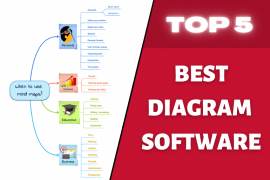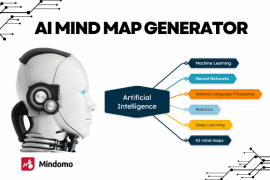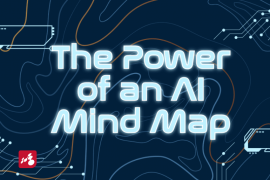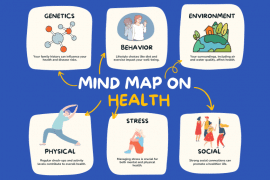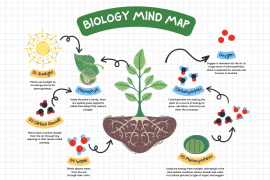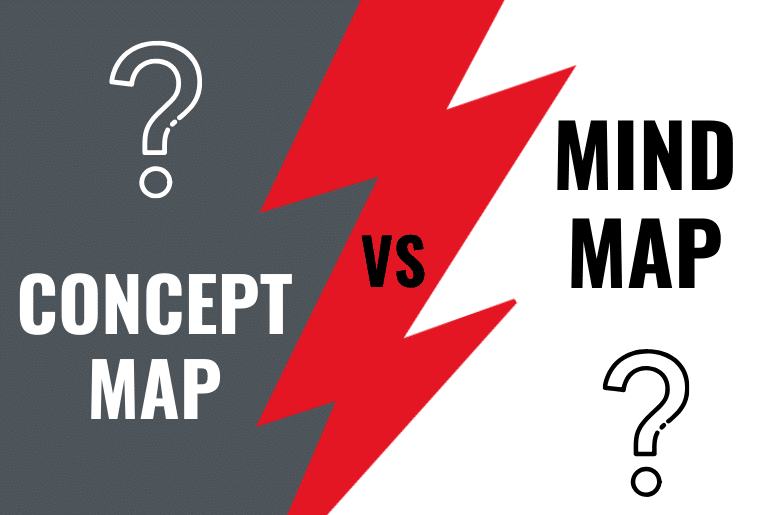
For many people, mind maps and concept maps are the same, which is why they are often confused. Although they resemble each other as frameworks for organizing information, they have their distinctive functions. Let’s see which one is better, depending on the use case.
Definitions
What is a concept map? It’s a free-form diagram that highlights relationships between certain concepts and ideas.
Developed in 1972 by Dr. Joseph D. Novak from Cornell University, it includes concepts and relationships between them marked by linking words or phrases.
What is a mind map? It’s a visual diagram showing concepts and ideas as a hierarchy.
Tony Buzan popularized the idea of mind mapping in 1970. A mind map has a central idea in the middle, with first-level and child-level topics branching out in a radial structure.
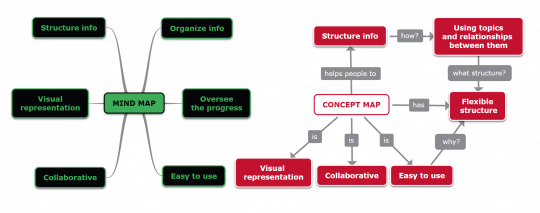
Both these visual diagram types can help you think outside the box, boost memorization, improve learning, promote better understanding, make information easier to structure, etc.
Their layouts are akin to how our brains create links between thoughts to build a bigger picture. Diagramming resembles the way we think, which is why these two graphic organizers are so powerful and popular.
From quick brainstorming to active lesson planning, from problem-solving to project management, almost everyone can take advantage of these diagramming techniques.
What are the differences?
| Concept Map | Mind Map |
| Connects multiple concepts or ideas (a network of interconnected concepts) | Focuses on one main idea (a tree chart for organizing knowledge) |
| The relationships between concepts are represented by labeled arrows (they are explained) | Relationships are marked by connecting lines (intuitive, not directly explained) |
| Many-to-many relationships between concepts | Simple relationships between ideas (usually one-to-one) |
| More suitable for representing complex information | More suitable for simple information, generating new ideas, note-taking mind maps, etc. |
| Propositional structure (topic-label-topic usually forms phrases) | Non-propositional structure |
| Longer creation process (requires thinking in detail) | Rather spontaneous creation process |
| Usually, it is more objective than subjective | Usually, it is more subjective than objective |
| Structure with many branches and clusters | Radial structure |
| Very flexible layout – free-form structure | Less flexible structure compared to a concept map |
Structure and Elements
A basic mind map diagram usually looks simpler compared to a concept map.
The concept map’s structure is:
- Hierarchical – elements are organized from the most general to the most specific ones.
- Propositional – thanks to the linking words (usually verbs), two concepts linked by a word become a statement. Basically, the whole concept map is a collection of phrases. In other words, the concepts are cross linked.
- Free-form – the layout is very flexible, concepts can be arranged and reorganized without any limitations.
However, a mind map’s structure is:
- Simple – topics are connected one by one.
- Radial – ideas are arranged around a central idea.
Both concept maps and mind maps derived their structures from topic maps, which have three key elements: topics, associations, and occurrences.
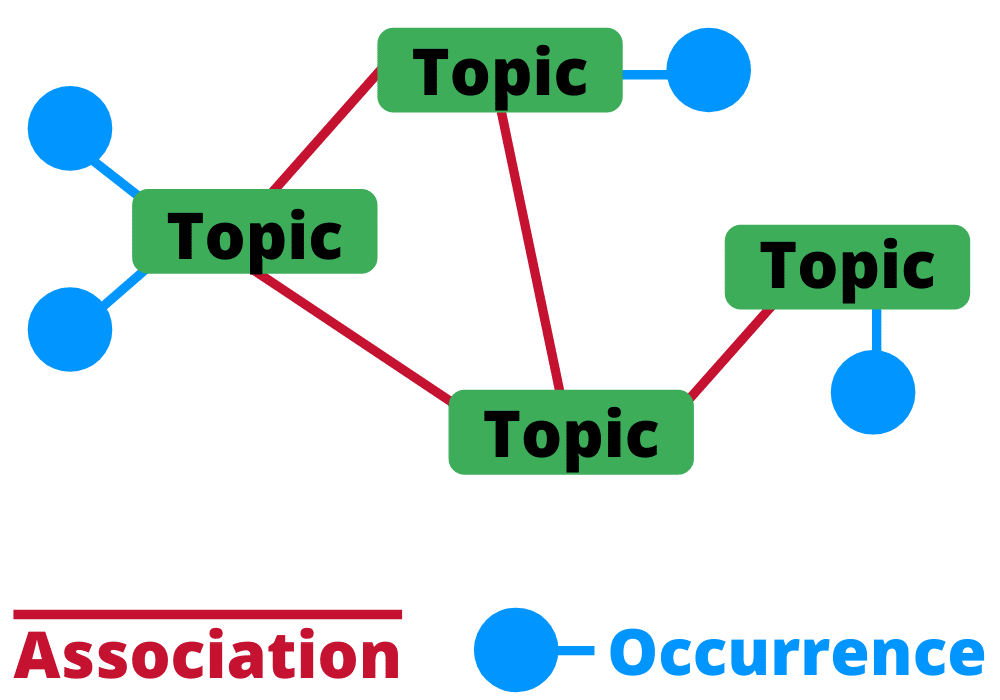
Similarly, concept mapping implies the following elements:
- Topics – represented by the more general concepts.
- Subtopics – represented by the more specific concepts.
- Arrows – illustrate the connection between concepts.
- Linking words – positioned on the arrows as labels; they explain the connections.
On the other hand, when you create mind maps, you use the following elements:
- Central topic
- Main topics – illustrated by the more general ideas.
- Subtopics – illustrated by the more specific ideas; structured on levels.
- Connecting lines – represent the relationships between ideas.
Advantages and Disadvantages
| Concept map – Advantages | Concept map – Disadvantages |
| More explicit than a mind map – less ambiguity | Creating it takes a longer compared to a mind map |
| Capable to illustrate complex information | Looks more complicated and can be less attractive |
| Very useful, especially in education | Can become hard to read if it has too many topics |
| Very flexible layout | Unfriendly for collaboration (high learning, complex rules). |
| Mind map – Advantages | Mind map – Disadvantages |
| Fast and easy to make | May be more ambiguous |
| Easy to read, eye-catching | Less flexible layout |
| Improves creativity, great for brainstorming | Not suitable for in-depth analysis |
| Easier to collaborate with others |
Which one to use and when?
The simple answer – learn how to make a mind map for simple and creative purposes and concept maps for complex matters. The best part is that you can use them in any domain: personal, work, or education.
Use a mind map app for brainstorming, book summaries, planning events or trips, organizing, to-do lists, problem-solving, note-taking, studying, etc.
Concept maps are more suitable whenever you need a visual structure that has complex relationships between concepts. Therefore, for studying, structuring courses, projects, business meetings, deep analysis, structuring HTML pages, vision boards, etc.
Diagramming with Mulquatro
Once you have decided which one to use, remember that using a mind map maker is an efficient option to create concept maps and mind maps online.
Almost any software has predefined templates you can use. There are various editing and customization options to choose from. Most importantly, you can benefit from real-time collaboration. Sometimes, “two minds are better than one”.
You can create both a free mind map and a free concept map using Mulquatro. Why Mulquatro?
Firstly, because it’s more than a mind map app. Compared with the other graphical tools, it’s software that allows you to create mind maps, concept maps, outlines, timelines, and even make Gantt charts. You can switch the diagram type to another one with just one click:
It offers real-time collaboration, which makes it a solid option for businesses, teachers, and students.
Mulquatro works on web, Android, iOS, Windows, macOS, and Linux. You can import files from your computer, Google Drive, One Drive, or Dropbox. When you’re done, you can export the diagram in many formats (Microsoft Office formats, PDF, Images, etc.)
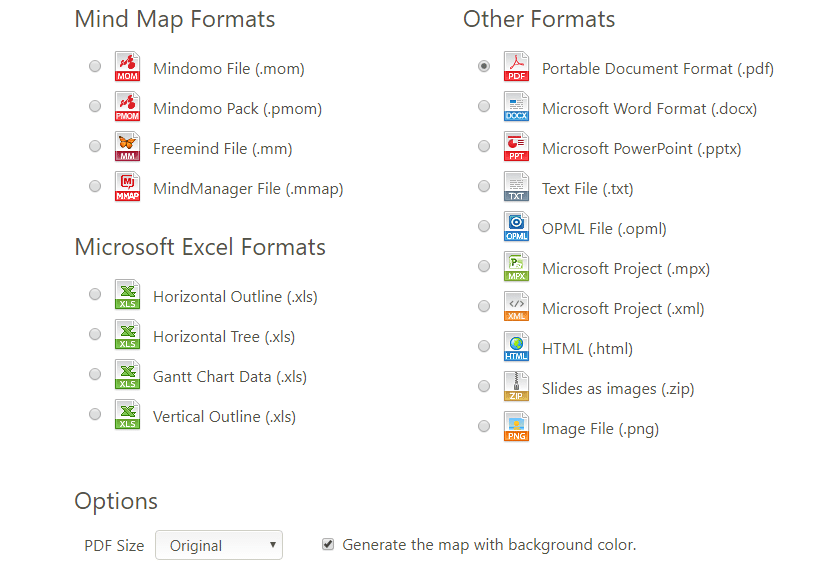
These are just some of Mulquatro’s key features. Try the free mind map software version and check out all functionality.
Keep it smart, simple, and creative!
The Mulquatro Team


